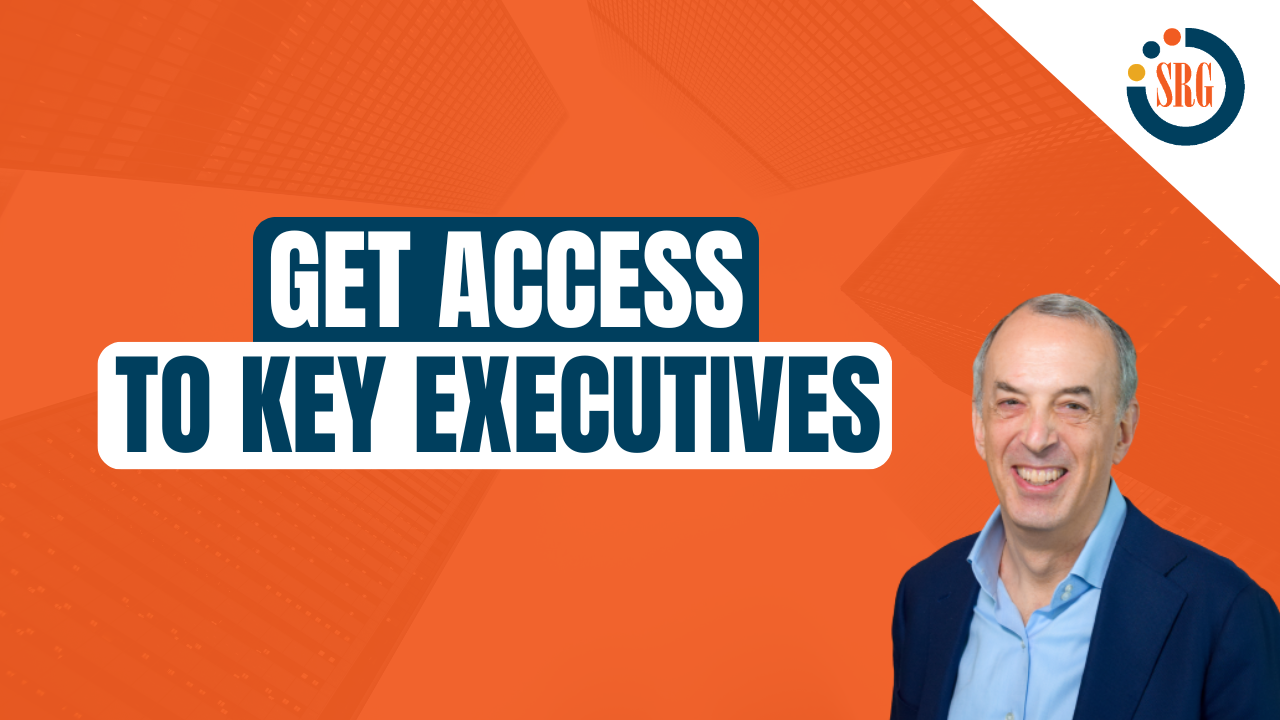How to Get Access to Key Executives


In previous blogs, we discussed how to prepare for a meeting with a key executive (see here and here). But the 800-pound elephant in the living room is how do you get a meeting with a senior executive in the first place?
Not to state the obvious, but accessing a senior-level executive is incredibly challenging. In addition to being over-scheduled, key executives at large organizations typically hand off the work of meeting with vendors to lower-level executives. When they do meet with salespeople, it’s often late in the buying process to ratify a decision that’s already been made by another stakeholder or committee.
While it’s challenging to get access to a senior-level executive, the payoff can be significant. Meeting with a key executive can give you the inside track on a sales opportunity, accelerate close times, and reduce competitive threats.
Here are three strategies to help you access key executives.
Use Referrals
Referrals are by far the most effective way to get an appointment with a key executive. A referral from someone who knows and values you, your solution, or your company introduces you to the key executive as a sales professional they can value and trust.
So, where can you find someone who can introduce you to the key executive you want to access?
The most powerful referral is likely to come from your customer coach. Customer coaches know the political landscape of the customer organization and are willing to share that information with you. They may also share personal and professional insights into the key stakeholder, including information about their priorities, personality, and communication style.
Other stakeholders within the buyer organization who may not rise to the level of a customer coach can also be good referral sources. You can also identify referral sources within your network of professional contacts. LinkedIn and professional associations are great for identifying current and former clients, colleagues, and contacts who can connect you to the key executive you try to access.
There are a few things you can do to get the most impact from a referral:
- Be generous with your referrals. Offer to make referrals for your partners, colleagues, or vendors. Model the type and quality of referrals you would want from others.
- Be proactive. Ask satisfied clients to refer you. Ask them if they know of anyone else who might benefit from speaking with you and sharing insights and ideas. If your customer mentions a possible referral, ask for the person’s name and contact information, then follow up within 24 hours.
- Make it easy: Offer to do the work. Provide suggested language and examples.
- Make it a habit. Ask for referrals as part of the sales conversation. It’s easier than contacting the client after the fact. Ask for a referral from every satisfied customer, partner, or colleague.
- Thank the referring person. Also, be sure to follow up and let the referring person know the results of the referral.
Create a Reason to Meet
Another way to gain access to a key executive is to create a reason to meet. Key executives are bombarded with meeting requests. Highlighting a specific event or opportunity gives executives a compelling reason to say yes to meeting with you. Reasons to meet might include:
- A strategic account review. Frame the meeting as an opportunity to highlight the value you have delivered for their organization and explore how to continue to move their business forward.
- A trigger event. Perhaps your research of the industry or company identified an emerging problem or opportunity for which you can be of assistance.
- Updates about changes at your company that provide value to the buyer. This might include a new product, offering or capability, or organizational change.
- An executive briefing. For instance, “Our Chief Technology Officer is going to be in town next week and would like to meet with you to discuss our new security features and development roadmap.”
Provide Insights
Another powerful access strategy is to provide insights or other valuable information to the key executive you want to meet. Insights might include an industry trend that your research revealed or that is highlighted in a research report or white paper. You can offer to share best practices, competitive insights, or industry information that you have gathered from your own experience. You can also share a relevant success story: Highlight the challenges you helped a similar client address and the concrete results of your solution.
Accessing senior-level executives is a tremendous challenge for sales professionals, but the payoff can be great. Using referrals, creating a reason to meet, and providing insights will make it easier for you to set appointments with senior stakeholders.
